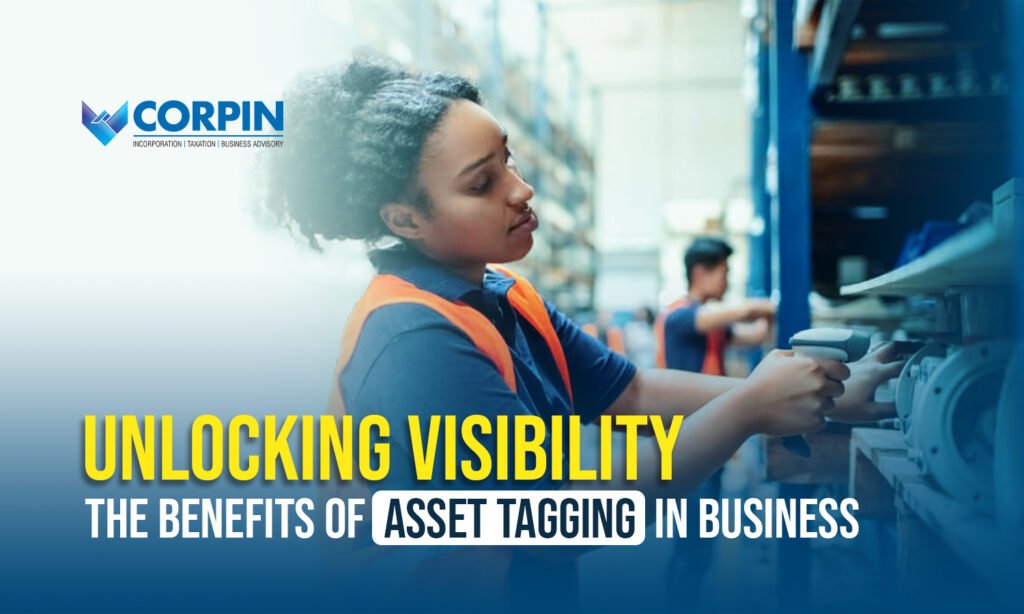Asset Tagging in UAE: The Key to Asset Management Success
Accurate information about the locations and operational status of your company’s physical assets becomes critical when dealing with hundreds or even thousands of them. Neglecting to do so can prompt blackouts and consistency issues, which thus might have huge business results. Whether it’s industrial machinery or computer monitors, using asset tags to effectively track and control assets is critical to your company’s overall financial performance. As the top asset management provider in Dubai, Corpin Consultancy offers unparalleled knowledge and tailored solutions to make the most of your resources. Our all-encompassing tracking and management techniques provide effectiveness, precision, and improved asset visibility, setting up your company for success. Physical assets often undergo various transformations, including field deployment, maintenance, sale, update, removal, or theft. Exploring the difficulties of following the area and state of resources during these situations can dismay. However, using an asset management system with asset labels or tags can make tracking and reviewing your assets easier. Asset tagging in UAE In the UAE, asset tagging is the process of attaching labels or tags on assets in order to identify them specifically and track them in real time, along with their location and maintenance history. These tags offer a thorough asset overview and may be applied to both mobile and fixed assets in different warehouses and locations. Real-time location tracking and the collection of information on asset purchases, maintenance plans, and depreciation value are made possible by tagging assets, which are then kept in a digital asset register. Demand is rising, with the asset-tracking technology industry expected to reach $36 billion (about $110 per person in the US) by 2025. A scalable and adaptable method for precisely locating and classifying objects in your surroundings is provided by asset tagging in the United Arab Emirates. The Importance of Asset Tagging Effective asset management requires asset tagging to track assets in real time and identify them uniquely. This includes recording an object’s location, maintenance history, and usage patterns. To provide a thorough operational perspective, this technique is essential for both permanent and mobile assets spread over multiple locations. Businesses may ensure optimal use, minimize asset loss, and collect vital information about purchase history, maintenance schedules, and depreciation values by using asset tagging, which is then recorded in a digital asset register. The need for these solutions is rising, with the asset-tracking technology industry expected to reach $36 billion by 2025. Asset tagging is a scalable and adaptable technique that improves inventory accuracy, operational efficiency, and strategic resource allocation in the United Arab Emirates by precisely locating and classifying assets. Being a leading provider of asset tagging services in the United Arab Emirates, Corpin Consultancy is renowned for its proficiency in effective asset management and tracking systems. We offer complete services designed to satisfy the varied demands of companies in a range of industries, all while maintaining a dedication to accuracy and dependability. Count on Corpin Consultancy to improve your operational effectiveness with our cutting-edge asset tagging services. It is essential to adhere to best practices that improve tracking accuracy and operational efficiency to guarantee effective asset tagging. Start by selecting long-lasting tags that can withstand temperature, moisture, and physical wear unique to the locations of your assets. For each tag, use unique identifiers to avoid duplicates and ensure precise tracking. Best Practices for Asset Tagging Ensure that each asset’s tags are securely affixed to prevent loss or damage and are consistently applied in a location that is both visible and easy to find. To record all pertinent information, including the purchase date, maintenance history, and depreciation value, use a standardized tagging system and keep an up-to-date digital asset register. Update the asset database regularly to reflect any modifications, such as the relocation, maintenance, or disposal of assets. Automate tracking and streamline data collection by integrating asset tagging with asset management software to enable real-time monitoring and reporting. Lead occasional reviews to confirm the precision of your resource records and the state of your labels, tending to any inconsistencies instantly. To maintain the system’s integrity, it is essential to provide staff with training on the significance of asset tagging and proper handling procedures. Organizations can get the most out of asset tagging by following these best practices and increasing asset visibility, utilization, and management efficiency.






 Book your Free Consultation
Book your Free Consultation